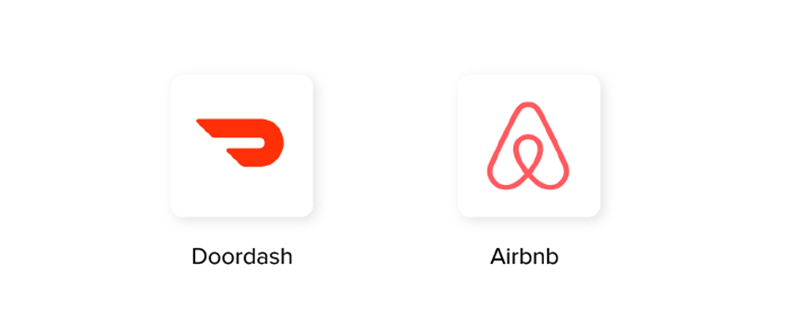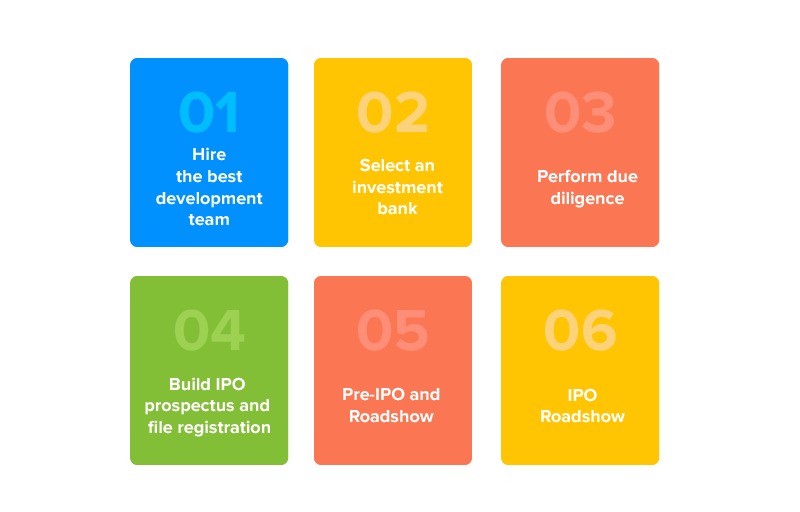For startups, the path to becoming that million-dollar business is paved with countless challenges. First, they need to find a winning idea and validate it. After that, they need to keep innovating and improving their product in order to stay ahead of the competition. Once they have successfully scaled, they might decide to offer their shares to the public. However, all the startups have one thing in common – they go through the same life cycle and development stages.
If you are also planning to start your entrepreneurial journey and scale your business, it’s crucial to first understand the various startup development stages that you need to go through.
1. Brainstorming idea: The first step is to brainstorm ideas that can make a difference and solve customers’ pain points. Finding a good idea can be very challenging and requires patience. You can start with figuring out your own passion and area of interest. Next, you need to find the problems that need to be solved in your field.
2. Market research and idea validation: The next step is to test and validate your idea to make sure that it is promising. Do a thorough research of the market and competitors. Once market research is done, you can decide if your idea is worth the investment.
3. Hiring a reliable development partner: Hiring the right development partner can increase the flexibility of your operations and help turn your idea into reality. A mobile app development company has a team of expert developers, UI/UX designers, and market specialists that offer competent suggestions and always take your vision into account.
A reliable development partner makes it easier to succeed in this fast-running competitive business environment and helps save a lot on product development. The company also provides the latest industry expertise and access to the newest technologies. So, joining hands with reputed development partners is the right thing to do if you want your product to succeed in the market.
4. Prototyping: Prototyping is an important stage when it comes to your product’s development journey. It helps to develop a navigation concept, create a design concept, and list the core features of your future solution. Using a prototype for usability testing allows enough time to make changes to critical design issues. Often the prototyping process reveals new opportunities and confirms the best direction to take during development. Developing a perfect prototype is the best approach to a quality product that can be created without unnecessary additional expenses.
5. MVP development: Once you have a prototype, it’s time to move to the next stage of startup development. Minimum Viable Product or MVP is the first version of a product with a basic set of features. It determines whether or not the product has the potential to succeed. MVP enables startups to engage the first users and understand the audience’s needs. Uber, Airbnb, or Foursquare – almost every top-grossing app that is ruling the market today has undergone this phase.
Moreover, you give users an opportunity to participate in MVP software development. Users can leave comments and feedback about their experience with your app, telling what functionality they would like you to add to your product.
Also, if you present your MVP to investors with your future plan, they can see the demand for your app in the market and get interested in it.
If your MVP doesn’t find success that doesn’t mean failure. At the very start of your product development process, you have enormous flexibility, so you are able to continue tweaking until you receive the ideal response. For a successful MVP development, hire a product development agency that can help bring your product to life.
6. Funding: It’s important to find the right investors who will support you in your entrepreneurial journey. Look for investors with diverse backgrounds and experiences that you could benefit from. Once you find the right investor, your task is to explain to potential investors that your idea is promising and will benefit the end-users.
7. Testing and launching: After the product is ready, it is necessary to make sure it is free from bugs and then launch it. At this stage, you should already have a comprehensive marketing strategy and a clear image of how to promote your app. If you hire a product development agency, the experts can provide you with effective marketing strategies to launch your app. They will also ensure that your app is bug-free and all set for the big launch.
Now that we have seen the various stages of startup development, from brainstorming ideas to MVP development to IPO, let’s see how Appinventiv has helped its clients in their journey.
How Appinventiv helped JobGet, a job search platform bag $2.1 million funding?
Our team of experts helped JobGet to create an application that makes the job search process easier for blue-collar workers. From understanding the client’s vision to MVP development using state-of-the-art technologies such as Artificial Intelligence (AI), our team helped the company in every step of its product development journey.
We helped them develop an app that brings down the job search process for hourly workers from months to days. We added the facility of having in-app interviews along with the functionality of finding employers and employees on the basis of location. Since its launch in the market, JobGet has bagged $2.1 million funding and more than 1,50,000 job seekers have been placed.
So, for companies like JobGet that have scaled their business with a top-notch product and received fundings from investors, it becomes easy to go public and acquire capital from public investors. The funds will help them to further grow their business. But does that mean this is the best step for your company as well? Let’s find out in the next section.
Should your business take the IPO route?
If you are planning to take the IPO route, just remember that it will not happen overnight. It can take around 5-7 years along with plenty of money. So, before you decide to go public, be clear on why you’re doing it and how it’s going to help improve your product and grow your business.
We have mentioned a few factors that will help you decide whether your business should take the IPO route or not.
1. Predictable financial growth: Accurate financial projections is the key to efficient business strategy planning. It helps analysts evaluate the company and give important indicators regarding the company’s overall financial performance. If your company’s financial growth rate is consistent and high, public investors will be willing to invest in your business. And this means that you can go public.
2. Having the best executive team: You should consider a team that has experience of being a part of a public company. In addition to a strong current team, you should estimate the need of expanding your finance and accounting staff to aid the process of going public.
Also, you must partner with the most skilled software developers that know how to digitize and prepare a private company for going public.
3. Reports are always audit-ready: Your quarterly report should consistently be released on time and always audit-ready. When your financial reports become forecastable and consistent, it shows you are in a good place to consider going public.
4. Having a strategic roadmap: A strategic roadmap is a blueprint of a company’s investment growth chart. It provides an operating strategy for growing business for providing investment returns which the prospective shareholders want from a public company.
5. Backup plan for delayed or no IPO: Business IPOs are expensive and risky. Having a backup plan for a delayed IPO—or possibly no IPO—is a must.
Before going public, make sure to consider all the above-mentioned factors. This decision can have a huge impact on your business. So think wisely before going forward.
Going for an IPO is not as easy as it sounds. It involves a lot of time, patience, and effort. While it is an effective means of raising additional funds, there are also some challenges that businesses might face when going public. Therefore, given below are the key advantages and disadvantages of IPO that businesses must know.
Key benefits of IPO
1. Fundraising: One of the foremost benefits of an IPO is that it helps to raise funds. These funds can benefit a growing company in a number of ways. Companies may use it for research and development, hiring new employees, acquiring new technology, reducing debt, and more. The money raised through an IPO is beneficial for transforming the growth trajectory of a company.
2. Publicity and credibility: If a company is looking for growth and success, it will need increased exposure to potential customers who know and trust its products. An IPO can help in doing so. Companies receive a lot of attention and credibility when they decide to go public. They go through intense scrutiny to ensure what they are reporting about themselves is correct. This leads to increased credibility for a company and its products.
3. Reduced overall cost of capital: Before going public, companies often pay higher interest rates on loans. But an IPO investment reduces the difficulty of getting additional capital significantly.
4. Stock as means of payment: Being a public company allows the use of publicly-traded stock as a means of payment. These public stocks offer the advantage of buying and selling them at a market price at any moment. This can be helpful when compensating employees and acquiring other businesses.
Challenges of IPO
1. Expensive and time-consuming process: Scaling your startup with an IPO investment is an expensive and time-consuming process. The costs of printing, legal, accounting are significantly high, and these costs are to be paid regardless of whether an IPO is successful or not.
2. Disclosure of financial details: Since the company becomes public, it has to reveal all its business information such as finances, team, revenue, tax, accounting, etc. This, in turn, may help the competitors gain an edge over the company.
3. Potential loss of control: One of the major challenges of an IPO is founders have high chances of losing control of their company. Once a company is public, they need to make sure that the public is happy, even if other shareholders do not have voting power. Startups going public means that they receive a large sum of money from public shareholders. Since shareholders have given money for the company, they expect founders to act in their best interest.
Examples of companies that went public

1. Doordash: This leading food delivery app has a 55% market share in the US. Doordash completed its IPO in 2020 and its stock price surged 85 percent on the first day of trading. The company has developed proprietary technology for restaurants to use and make fast delivery a priority. These efforts have helped DoorDash win over big chain restaurants.
2. Airbnb: While Airbnb faced several challenges due to the pandemic’s effect on travel, the company’s IPO still hit the market in December 2020, and the stock price doubled on opening day, reaching a $100 billion market value.
How to get IPO ready?
If you have decided that it’s now time to go public, you need to follow a few steps to get IPO ready. These steps will ensure that you don’t commit any mistakes in your journey and receive fundings without any hassle.
Below are the steps that you must undertake to go public via an IPO process:

1. Hire the best development team: Selecting the best development team to handle your product development needs is vital for the success of your business. The success of an IPO depends entirely on the product you are selling. So, we recommend choosing the best software development agency for your product needs.
2. Select an investment bank: The banks act as mediators between the companies looking to issue an IPO and the investors. They carry out a number of processes like marketing, document preparation, issuance, filing, documentation, etc. Apart from an investment bank, you need to hire a lawyer as well.
3. Perform due diligence: The underwriters, banks, and lawyers work together to conduct an in-depth audit of the company. Their review includes market research, legal, tax, financial, customer verification, etc. The intent is to create complete transparency in the company’s operations and presume risks.
4. Build IPO prospectus and file registration: The next step is to build an IPO prospectus using due diligence information. It will highlight the company’s strength, market share, financial investments, and products. You also need to file complete registration statement with the Securities and Exchange Commission (SEC). SEC reviews and comments within 30 days. After this process, companies complete the initial listing application round.
5. Pre-IPO and Roadshow: Bankers and management teams hold a “roadshow”. It is a series of presentations in which they market the IPO to prospective investors. It usually takes place when they first announce the offered price range and size of the shares. The intent is to gather interested investors for driving up the initial sales price.
6. Initiate Trading: The next step is that bankers set up a price determining the initial share value. After a few days, the IPO closes, and stakeholders release their shares. After the shares have been released, investors who purchased the shares get an allocation, and the public trading officially begins.
Conclusion
So, if you are looking to start your entrepreneurial journey or grow your business, first make sure to test your product by developing an MVP. An MVP will help you get feedback from users and determine if your product would be successful or not. It also helps attract investors. After a few years of launching your product in the market, if you think you’re IPO-ready, go for it. IPO allows you to identify where your startup stands and get access to extensive capital that can be used to grow your business.
We hope this article was helpful in giving you an idea of how you can upscale your startup. In case you still have questions regarding MVP development or IPO, feel free to contact us.

strategies your digital product..




